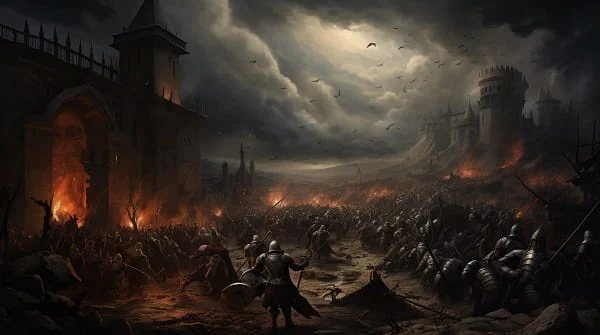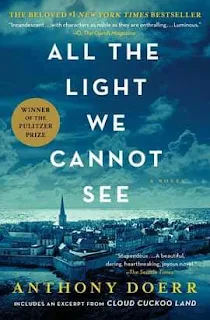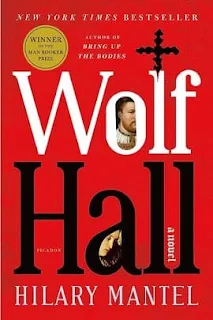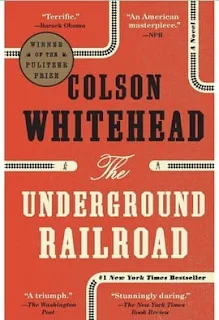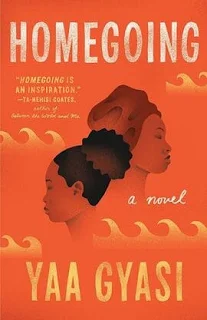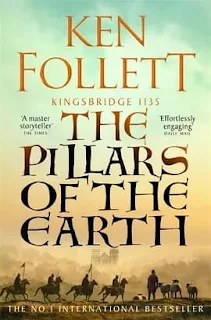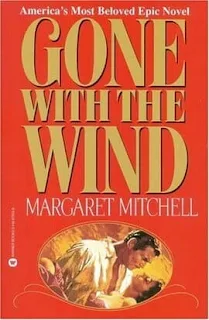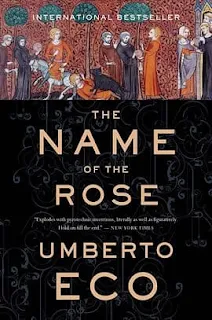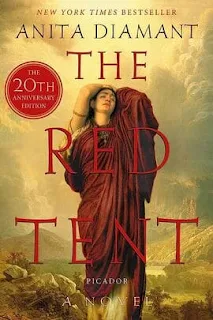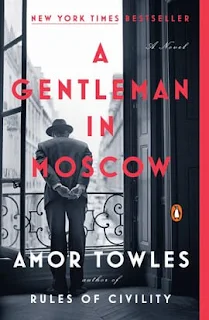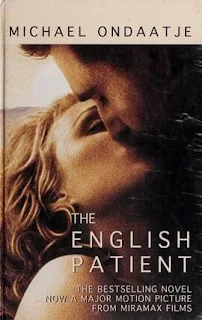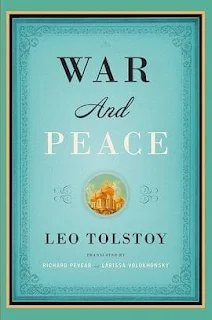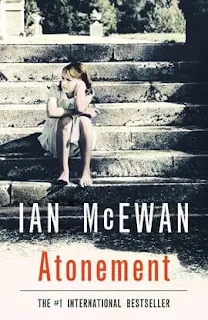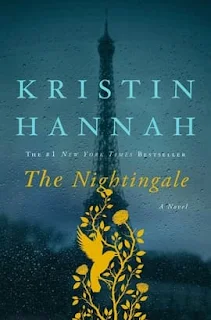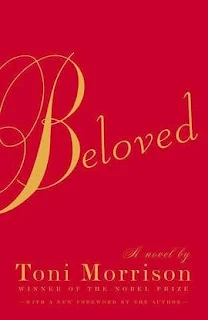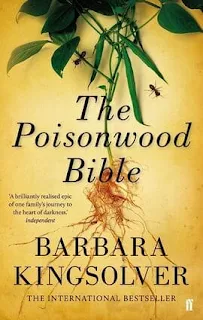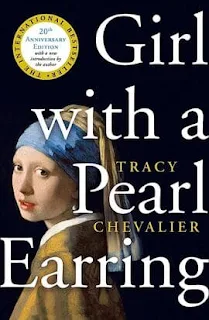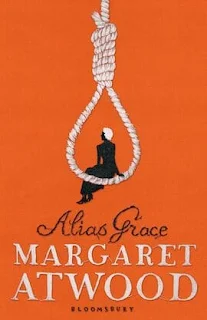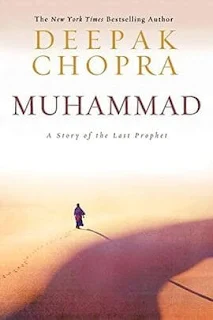Top 26 Historical Fiction Novels of All Time (2025 Updated)
Do you enjoy learning about different cultures and time periods? If so, then you'll love this list of the top 26 historical fiction books of all time. These books take you on a journey through time, from the ancient world to the modern day. You'll meet fascinating characters, experience exciting adventures, and learn about important historical events.
Whether you're a history buff or just enjoy a good story, these books are sure to entertain and enlighten you. So what are you waiting for? Start your journey today!
Epic Tales: Discover the 26 Best Historical Fiction Books Ever
Step into the pages of history as I invite you on an extraordinary literary voyage through the captivating world of historical fiction. In this blog post, I am thrilled to share with you a handpicked collection of what I believe are the finest historical fiction novels ever written.
For me, historical fiction is a genre like no other. Its enchanting ability to transport us to bygone worlds, blending captivating storytelling with historical accuracy, never fails to leave a lasting impression. Each book on this list has spoken to me on a profound level, offering a glimpse into the lives of characters who have lived in different eras and cultures.
Related post: The 50 Best Short Stories of All Time: A Must-Read List for Any Fan of Literature
Within these pages, you will find tales of love and loss, triumphs and tragedies, epic journeys, and clandestine secrets. These masterpieces not only entertain but also educate, shedding light on pivotal moments and forgotten lives.
As we venture through the devastation of war-torn Europe, the antebellum South, the courts of ancient Rome, and the exotic beauty of Japan, I hope you, too, will be captivated by the vivid imagery and profound emotions these stories evoke.
Join me on this literary expedition as we celebrate the magic of historical fiction and pay homage to the authors who have gifted us with these timeless treasures. Whether you are an ardent history buff or simply a lover of compelling narratives, I believe this carefully curated selection has something extraordinary to offer every reader.
Related post: Must-read: 50 books that changed the World: Most influential books of all time
So, grab your favorite beverage, settle into a comfortable chair, and let us lose ourselves in the enthralling worlds of "All the Light We Cannot See," "The Book Thief," "The Name of the Rose," and other incredible works that, in my view, have earned their place among the greatest historical fiction books of all time.
Here's a list of the 26 best historical fiction books of all time, combining both critical acclaim and popularity among readers:
Updated & Expanded for 2025: 26 of the best historical fiction novels of all time. Explore different eras and discover your next favorite read!
1. "All the Light We Cannot See" by Anthony Doerr
"All the Light We Cannot See" by Anthony Doerr is a poignant and beautifully written historical fiction novel set during World War II. The story follows the lives of two young protagonists: Marie-Laure, a blind French girl forced to flee Paris with her father, and Werner, a German orphan with a remarkable talent for engineering. As the war rages on, their paths inevitably cross in the occupied French town of Saint-Malo. Through exquisite prose and alternating perspectives, Doerr weaves a mesmerizing tale of love, courage, and the indomitable human spirit amidst the darkness of war.
Historical setting and time period: The novel is primarily set during World War II, spanning from the late 1930s to the mid-1940s. The narrative takes place in various locations, including Paris and the coastal town of Saint-Malo in France. The story vividly portrays the harrowing experiences of civilians during the German occupation of France and provides an insightful look into the impact of war on ordinary lives. Throughout the book, readers encounter major historical events and figures, such as the Allied invasion of Normandy and the activities of the German scientific organization, the National Political Institutes of Education, which played a role in recruiting young talents like Werner.
2. "The Book Thief" by Markus Zusak
"The Book Thief" by Markus Zusak is a captivating and heart-wrenching historical fiction novel set in Nazi Germany. Narrated by Death, the story revolves around Liesel Meminger, a young girl sent to live with foster parents in the fictional town of Molching. As Liesel adapts to her new life, she finds solace in stealing books and discovers the transformative power of words. Amidst the atrocities of war and the rise of the Nazi regime, Liesel befriends a Jewish man named Max, whose life she strives to protect. With lyrical prose and unforgettable characters, Zusak's novel explores themes of love, resilience, and the courage to stand up against injustice.
Historical setting and time period: "The Book Thief" is set in Nazi Germany during World War II, starting in 1939 and continuing until 1943. The story takes place in the fictional town of Molching, which represents a typical German town during that period. Throughout the novel, readers are exposed to the devastating effects of the Holocaust and the suppression of free speech and expression under the Nazi regime. The book also delves into the experiences of ordinary German citizens and the impact of the war on their lives, providing a poignant and thought-provoking perspective on this tumultuous time in history.
Related post: 20 Unputdownable Books: Page-Turners Extraordinaire You Can't Put Down!
3. "Wolf Hall" by Hilary Mantel
"Wolf Hall" by Hilary Mantel is a compelling and meticulously researched historical fiction masterpiece set in the court of King Henry VIII. The novel centers around Thomas Cromwell, a talented and ambitious commoner who rises from his humble beginnings to become a trusted advisor to the king. As Henry's marriage to Catherine of Aragon crumbles, and his desire for Anne Boleyn intensifies, Cromwell finds himself navigating the treacherous world of Tudor politics and court intrigue. Mantel's exquisite prose brings to life the complex characters and tumultuous events of this tumultuous period, offering a fresh and intimate perspective on the rise and fall of Anne Boleyn and the tumultuous reign of Henry VIII.
Historical setting and time period: "Wolf Hall" is set during the early 16th century, primarily between 1527 and 1535. The story takes place in the court of King Henry VIII of England, a time of great political and religious upheaval. Thomas Cromwell's rise to power coincides with Henry's quest for an annulment of his marriage to Catherine of Aragon so that he can marry Anne Boleyn. The novel intricately portrays the religious and political changes of the time, including the break from the Roman Catholic Church and the establishment of the Church of England. Readers will encounter significant historical figures like Cardinal Wolsey, Sir Thomas More, and, of course, the formidable Anne Boleyn, making "Wolf Hall" an enthralling journey into the heart of the Tudor dynasty.
4. "Pachinko" by Min Jin Lee
"Pachinko" by Min Jin Lee is a sweeping and multigenerational historical fiction saga that spans decades and continents. The novel follows the lives of a Korean family living in Japan, beginning in the early 1900s and continuing through the late 1980s. At its core is Sunja, a young woman who becomes pregnant out of wedlock and marries a young minister to save face. The story unfolds against a backdrop of political upheaval, discrimination, and the struggle for survival. Through vivid and emotionally charged storytelling, Lee delves into the complexities of identity, love, sacrifice, and the resilience of the human spirit.
Historical setting and time period: "Pachinko" is set primarily in Korea and Japan, starting in the early 1900s during the Japanese colonization of Korea and continuing through the late 1980s. The novel explores the harsh realities faced by the Korean community in Japan, where they were often marginalized and discriminated against. The story covers significant historical events, such as the outbreak of World War II, the Korean War, and Japan's rapid economic growth during the post-war period. Lee skillfully weaves the characters' personal struggles with the broader historical context, creating a compelling and illuminating narrative that sheds light on a lesser-known aspect of East Asian history.
5. "The Underground Railroad" by Colson Whitehead
"The Underground Railroad" by Colson Whitehead is a powerful and imaginative historical fiction novel that reimagines the Underground Railroad as an actual physical network of secret routes and tunnels, allowing enslaved Africans in the southern United States to escape to freedom. The story follows Cora, a young woman born into slavery on a Georgia plantation, as she embarks on a perilous journey towards liberty. As Cora traverses through different states, each with its unique challenges and dangers, Whitehead skillfully explores the enduring legacy of slavery and the human capacity for cruelty and compassion. With evocative prose and haunting imagery, "The Underground Railroad" is a searing examination of America's dark past and a testament to the indomitable human spirit.
Historical setting and time period: "The Underground Railroad" is set in the United States during the 19th century, a time when slavery was deeply entrenched in the southern states. The novel spans a period from the early to mid-1800s, offering a vivid portrayal of the harsh realities faced by enslaved African Americans during this era. While the Underground Railroad was not a literal railroad system, Whitehead uses it as a metaphorical device to explore the courage and resilience of those who sought freedom and justice in the face of unspeakable oppression. Through Cora's journey, readers are exposed to the diverse landscapes of antebellum America and the complex moral choices that defined the struggle for emancipation.
6. “Homegoing” by Yaa Gyasi
"Homegoing" by Yaa Gyasi is a poignant and sweeping historical fiction novel that traces the lives of two half-sisters, Effia and Esi, born in 18th-century Ghana. Despite being unaware of each other's existence, their stories unfold in parallel, depicting the vastly different paths their lives take. Effia marries a British slave trader, living in relative comfort in the Cape Coast Castle, while Esi is captured and sold into slavery, enduring unimaginable hardships on American plantations. Each subsequent chapter follows the descendants of these two women, offering a multi-generational narrative that spans centuries and continents. Through Gyasi's masterful storytelling, "Homegoing" explores the lasting impact of slavery and colonialism on the African diaspora, and the profound connections that bind families across time and space.
Historical setting and time period: "Homegoing" encompasses a wide range of historical settings and time periods, starting in 18th-century Ghana during the height of the transatlantic slave trade. The novel covers the experiences of enslaved Africans in the British colonies of the Americas, particularly in the southern United States. It also delves into the tumultuous history of Ghana, including its struggles with colonization and independence. Gyasi's storytelling skillfully navigates through significant historical events, such as the Ashanti-Fante war in Ghana, the realities of slave plantations in the American South, and the African-American experience during the Jim Crow era and the civil rights movement. Through the diverse perspectives of the characters, "Homegoing" offers a profound exploration of the complexities of identity, heritage, and the enduring legacy of the past.
7. "The Pillars of the Earth" by Ken Follett
"The Pillars of the Earth" by Ken Follett is an epic historical fiction novel set against the backdrop of 12th-century England. The narrative unfolds amidst the construction of a grand cathedral in the fictional town of Kingsbridge. At the heart of the story is the enigmatic Prior Philip, the determined builder Tom Builder, and the resourceful Aliena, whose lives become intricately entwined in their pursuit to realize the vision of the magnificent cathedral. Against the backdrop of political intrigue, war, and religious turmoil, Follett weaves a tale of ambition, love, and betrayal. The novel paints a vivid portrait of medieval society, highlighting the struggle for power, the plight of serfs, and the indomitable spirit of those who dared to defy the norms of their time.
Historical setting and time period: "The Pillars of the Earth" is set in 12th-century England, during a period known as The Anarchy, which was a civil war between supporters of King Stephen and Empress Matilda. The story spans several decades, starting in the year 1135 and continuing into the early 12th century. The novel provides a rich portrayal of medieval life, including the construction of cathedrals, the feudal system, the power struggles between nobles and the church, and the everyday challenges faced by common people. Readers are transported to a world where kings and queens vie for the throne, knights uphold chivalry, and the foundations of great cathedrals rise as symbols of faith and architectural brilliance. "The Pillars of the Earth" immerses readers in a tumultuous period of history, where ambition and ingenuity shaped the destiny of individuals and the course of nations.
8. "Gone with the Wind" by Margaret Mitchell
"Gone with the Wind" by Margaret Mitchell is an epic and enduring historical fiction novel set during the American Civil War and its aftermath. At its center is Scarlett O'Hara, a headstrong and captivating Southern belle, whose life unfolds against the backdrop of Georgia's Tara plantation. As the war ravages the South and upends the genteel way of life, Scarlett navigates through personal trials, love triangles, and the pursuit of survival and prosperity. Through vividly drawn characters and sweeping drama, Mitchell weaves a tale of love, loss, resilience, and the complexities of human nature. "Gone with the Wind" is a timeless classic that captures the essence of the Old South while delving into the tumultuous historical period that shaped a nation.
Historical setting and time period: "Gone with the Wind" is set during the American Civil War and Reconstruction era in the southern United States. The novel spans from 1861 to 1873, capturing the turbulent years of the war and its aftermath. The story revolves around the experiences of the Southern states, particularly Georgia, during this pivotal time in American history. Readers are immersed in the changing social fabric of the South, the impact of war on plantation life, and the struggles faced by those who yearned to preserve their way of life amidst the chaos of conflict and Reconstruction. With the fall of the Confederacy and the rise of the Reconstruction era, "Gone with the Wind" presents a rich and compelling portrayal of a defining period in American history, while also exploring timeless themes of love, survival, and the indomitable human spirit.
Related post: The 20 Best Romance Books of All Time: A Timeless Collection of Love Stories
9. "The Name of the Rose" by Umberto Eco
"The Name of the Rose" by Umberto Eco is a captivating historical fiction mystery set in a 14th-century Italian abbey. The story follows the keen-witted Franciscan friar, William of Baskerville, and his young apprentice, Adso of Melk, as they arrive at the remote abbey to attend a crucial theological debate. However, their arrival coincides with a series of mysterious deaths, and William finds himself drawn into a labyrinthine puzzle of murders that seem to be connected to hidden knowledge and forbidden books. As the body count rises, William races against time to decipher the cryptic clues and unravel the secrets that threaten to tear the abbey apart. Eco's masterful blend of historical accuracy, intellectual intrigue, and medieval theology creates a gripping narrative that keeps readers on the edge of their seats until the final revelation.
Historical setting and time period: "The Name of the Rose" is set in the year 1327, during the High Middle Ages in northern Italy. The novel is meticulously researched, offering an immersive experience of life in a medieval abbey. The story takes place against the backdrop of religious and political turmoil, as the Catholic Church grapples with the rise of heresy and the challenges to its authority. The abbey, with its intricate architecture and religious practices, becomes a microcosm of the broader societal struggles of the time. Through William of Baskerville's keen intellect and Adso's wide-eyed naivety, Eco captures the essence of medieval Europe while exploring profound themes of knowledge, power, and the clash between reason and superstition. "The Name of the Rose" is a literary tour de force that transports readers to a distant past and enthralls them with its blend of history, philosophy, and suspense.
10. "The Red Tent" by Anita Diamant
"The Red Tent" by Anita Diamant is a captivating and empowering historical fiction novel that breathes life into the untold stories of women from biblical times. The novel is centered around Dinah, the daughter of Jacob and Leah, whose voice and experiences are often overlooked in the Bible. Through Dinah's perspective, Diamant paints a rich tapestry of the lives of women in ancient times, their bonds, rituals, and the profound sisterhood that thrives within the red tent, a sacred space for women during menstruation and childbirth. As the story unfolds, readers are transported to a world of ancient traditions, love, heartbreak, and the resilience of women amid the patriarchal norms of their society. "The Red Tent" is a celebration of femininity, offering a fresh and empowering perspective on biblical history that resonates with modern readers.
Historical setting and time period: "The Red Tent" is set in ancient times, primarily during the period described in the Bible's book of Genesis. The narrative spans from around 2000 BCE to 1500 BCE, encompassing various regions of the ancient Near East. The story takes place within the context of biblical events, such as the story of Jacob and his twelve sons, including Dinah. Through the eyes of Dinah, readers are exposed to the customs, traditions, and everyday life of women in biblical times. The novel explores themes of sisterhood, motherhood, and the resilience of women, offering a unique glimpse into the lives of female characters who have been obscured by male-dominated historical accounts. "The Red Tent" weaves together biblical history with a beautifully imagined narrative, offering a captivating and empowering portrayal of women's experiences in the ancient world.
11. “A Gentleman in Moscow” by Amor Towles
"A Gentleman in Moscow" by Amor Towles is a charming and exquisitely crafted historical fiction novel that unfolds within the confines of Moscow's famed Metropol Hotel. Set in the aftermath of the Russian Revolution, the story revolves around Count Alexander Rostov, an aristocratic gentleman who finds himself sentenced to house arrest within the grand hotel's walls. As the decades pass, Count Rostov's life becomes intricately intertwined with the hotel staff and guests, and he navigates the shifting political landscape with wit, grace, and indomitable spirit. Through Towles' elegant prose and vivid characterization, "A Gentleman in Moscow" offers a heartwarming tale of resilience, friendship, and the pursuit of a life well-lived amidst the tumultuous backdrop of 20th-century Russia.
Historical setting and time period: "A Gentleman in Moscow" is set in post-revolutionary Russia, primarily from the early 1920s to the mid-1950s. The novel's backdrop is the era of Soviet history marked by the rise of the Communist regime and the immense social and political changes that followed the Russian Revolution. As Count Rostov lives out his house arrest in the Metropol Hotel, readers are offered glimpses into various historical events, such as the early years of the Soviet Union, the reign of Joseph Stalin, and the influence of the KGB secret police. The story skillfully captures the tensions and uncertainties of the time while celebrating the Count's unwavering dignity and his ability to find beauty and meaning within the confined walls of the hotel. "A Gentleman in Moscow" is a beautifully told tale that transports readers to a bygone era while exploring timeless themes of humanity, adaptability, and the enduring spirit of human connection.
12. “The English Patient” by Michael Ondaatje
"The English Patient" by Michael Ondaatje is a haunting and evocative historical fiction novel that weaves together the lives of four individuals whose paths intersect in an abandoned Italian villa during the final days of World War II. Hana, a young nurse haunted by the trauma of war, tends to the enigmatic "English Patient," a severely burned and unidentified man with a mysterious past. Caravaggio, a Canadian intelligence officer and thief, arrives at the villa, seeking answers and revenge. As the patient's memories slowly unfold, the novel takes readers on a mesmerizing journey through time, unraveling the enigmatic web of love, passion, betrayal, and the devastation of war. Ondaatje's lyrical prose and layered storytelling create a mesmerizing tapestry of emotions and human connections amidst the backdrop of war-torn Europe.
Historical setting and time period: "The English Patient" is primarily set during the final months of World War II, specifically in 1945. The novel takes place in an abandoned Italian villa, once a haven for love and art, now scarred by the ravages of war. The story delves into the complex emotions and experiences of those affected by the war, whether it be the physical and emotional wounds of soldiers or the psychological toll it takes on those left behind. The novel traverses different geographical locations, including North Africa, Italy, and England, as the lives of the characters become intertwined in ways both poignant and tragic. "The English Patient" explores the themes of identity, love, memory, and the enduring impact of war, offering a profound and poetic meditation on the human spirit and the lasting echoes of the past.
13. "War and Peace" by Leo Tolstoy
"War and Peace" by Leo Tolstoy is a sweeping and monumental historical fiction masterpiece that spans several decades, portraying the lives of multiple characters against the backdrop of Russia's tumultuous history. The novel chronicles the intertwining destinies of aristocratic families, including the Bolkonskys, the Rostovs, and the Bezukhovs, as they navigate through love, war, and societal changes. Set during the Napoleonic era, "War and Peace" captures the grandeur of Russian society and the devastating impact of the French invasion of Russia. Tolstoy's magnum opus delves into the human psyche, exploring themes of love, power, fate, and the enduring search for meaning amid the chaos of war and the complexities of life. With intricate character development, profound philosophical reflections, and vivid historical detail, "War and Peace" remains an enduring classic that offers an unparalleled insight into the human condition.
Historical setting and time period: "War and Peace" is set during the early 19th century, primarily spanning the years 1805 to 1812. The novel unfolds against the backdrop of Napoleon Bonaparte's military campaigns, particularly the French invasion of Russia in 1812. Tolstoy's narrative provides a vivid portrayal of Russian society, from the opulence of aristocratic ballrooms to the harsh realities of war on the battlefield. The story takes readers through significant historical events, including the Battle of Austerlitz and the Battle of Borodino, where the Russian forces confronted Napoleon's Grande Armée. The novel explores the personal and societal impact of war, as well as the profound philosophical questions surrounding the nature of human existence. Tolstoy's masterpiece is a grand tapestry of history, love, and destiny that continues to captivate readers with its timeless themes and profound insights into the human spirit.
14. "A Tale of Two Cities" by Charles Dickens
15. "The Other Boleyn Girl" by Philippa Gregory
16. "Shōgun" by James Clavell
17. "Memoirs of a Geisha" by Arthur Golden
"Memoirs of a Geisha" by Arthur Golden is a mesmerizing historical fiction novel that offers a rare and intimate glimpse into the secretive and captivating world of geishas in pre- and post-war Japan. The story follows the life of Chiyo, a young girl from a fishing village who is sold into the geisha district of Kyoto, where she begins her arduous training to become a geisha under the name Sayuri. As Sayuri navigates the intricacies of the geisha tradition, she finds herself entangled in a complex web of rivalries, love, and the pursuit of independence. Golden's meticulously researched portrayal of Japanese culture and society immerses readers in the beauty and discipline of the geisha world, while also exploring the impact of war and modernization on traditional customs. "Memoirs of a Geisha" is a tale of resilience, identity, and the enduring pursuit of one's dreams against the backdrop of a rapidly changing Japan.
Historical setting and time period: "Memoirs of a Geisha" is set in Japan during the early to mid-20th century, spanning from the 1920s to the 1940s. The novel delves into the captivating world of geishas, particularly during the pre-World War II and post-war eras. It offers a glimpse into the intricate rituals, arts, and traditions of the geisha district of Kyoto, as well as the impact of historical events on the geisha community. Readers are transported to the tumultuous period of Japan's history, marked by rapid modernization, the rise of militarism, and the devastation of World War II. Against this backdrop, Sayuri's journey from a young girl into a renowned geisha provides a poignant exploration of the complexities of identity, love, and the enduring spirit of determination. "Memoirs of a Geisha" is a beautifully rendered tale that captures the essence of Japanese culture and the resilience of those who dare to dream in a changing world.
18. "Outlander" by Diana Gabaldon
"Outlander" by Diana Gabaldon is a captivating and genre-defying historical fiction novel that seamlessly blends elements of romance, time travel, and adventure. The story follows Claire Randall, a World War II nurse who is unexpectedly transported back in time to 18th-century Scotland. As Claire finds herself entangled in the dangerous world of warring clans and political intrigue, she encounters the dashing Scottish warrior, Jamie Fraser. Their passionate and forbidden love story unfolds against the backdrop of a tumultuous historical period, with Claire torn between her life in the 20th century and the bonds she forms in the past. Gabaldon's rich historical detail and masterful storytelling create a mesmerizing narrative that keeps readers spellbound from the very first page.
Historical setting and time period: "Outlander" is primarily set in two time periods: the 1940s, during and after World War II, and the 18th century, specifically during the Jacobite Rising of 1745. The novel begins in post-war Scotland, where Claire and her husband, Frank, are attempting to reconnect after being separated by the war. However, when Claire is mysteriously transported back in time to the 18th century, readers are immersed in the rich history of 18th-century Scotland. The story takes place during a period of political upheaval, with the Jacobite Rising of 1745 serving as a central backdrop. Through Claire's journey, readers experience the beauty and danger of the Scottish Highlands, the complex social dynamics of the clans, and the hardships faced by the Scottish people during this historical era. "Outlander" is a thrilling and emotionally charged tale that expertly weaves together history, romance, and fantasy, creating a truly unforgettable reading experience.
19. "Atonement" by Ian McEwan
"Atonement" by Ian McEwan is a haunting and emotionally riveting historical fiction novel that unravels the consequences of a single life-altering lie. The story begins in 1935 on a stifling summer day at the Tallis family's English country estate. Thirteen-year-old Briony witnesses a seemingly innocent moment between her older sister, Cecilia, and their housekeeper's son, Robbie, which she misinterprets. Fuelled by her overactive imagination and jealousy, Briony's lie sets off a chain of events that forever alters the lives of those involved. As World War II looms on the horizon, the characters are caught in a web of guilt, love, and the quest for redemption. McEwan's lyrical prose and masterful storytelling explore the complex nature of truth, the power of imagination, and the lifelong search for atonement in the face of war's harsh realities.
Historical setting and time period: "Atonement" spans a significant portion of the 20th century, primarily set in England from the 1930s to the early 21st century. The novel opens in the summer of 1935, a time of innocence and privilege, just before the outbreak of World War II. The narrative delves into the lives of the Tallis family, exploring the dynamics of the British upper class before and during the war. As the war unfolds, readers witness the transformative impact of the conflict on the characters' lives and the wider society. McEwan's vivid portrayal of the wartime experiences offers a stark contrast to the idyllic pre-war setting, revealing the devastating effects of war on love, relationships, and personal growth. "Atonement" is a profound meditation on the nature of guilt, forgiveness, and the complexities of human emotions, leaving readers pondering the intricacies of truth and the enduring power of redemption.
20. "The Nightingale" by Kristin Hannah
"The Nightingale" by Kristin Hannah is a poignant and emotionally gripping historical fiction novel that weaves a tale of courage, sacrifice, and resilience amidst the horrors of World War II. Set in German-occupied France, the story follows the lives of two sisters, Vianne and Isabelle, whose paths diverge as they each confront the devastating realities of war in their own way. Vianne, the elder sister, strives to protect her family and maintain some semblance of normalcy in the face of oppression. Isabelle, rebellious and headstrong, joins the French Resistance, risking her life to fight against the Nazi regime. Through their extraordinary journeys, Hannah portrays the indomitable spirit of women during wartime and the unbreakable bonds of family and love that endure even in the darkest of times.
Historical setting and time period: "The Nightingale" is primarily set in France during World War II, from the early 1940s to the liberation of France in 1944. The novel vividly captures the experiences of the French people under Nazi occupation, depicting the harsh realities of daily life, the dangers faced by those involved in the Resistance, and the unimaginable losses suffered during the war. The story explores the complexities of human relationships in the face of adversity, as well as the sacrifices made by ordinary individuals to protect their loved ones and their homeland. Through the eyes of Vianne and Isabelle, "The Nightingale" pays tribute to the countless unsung heroes who fought for freedom and survival during one of the darkest periods in history. Hannah's masterful storytelling creates an emotionally resonant and unforgettable narrative that celebrates the strength and resilience of the human spirit in the midst of unimaginable hardship.
21. “Beloved” by Toni Morrison
"Beloved" by Toni Morrison is a haunting and powerful historical fiction novel that explores the enduring legacy of slavery and its impact on the human psyche. Set in the years following the American Civil War, the story centers around Sethe, an escaped slave who has found refuge in Ohio, but is haunted by the memories of her past. When a mysterious young woman, known only as Beloved, arrives at her doorstep, Sethe's past resurfaces, and the painful secrets she has buried come to light. As the narrative unfolds, readers are confronted with the horrors of slavery and the psychological scars it leaves on those who have endured it. Morrison's lyrical prose and inventive narrative structure create a visceral and emotionally charged experience, exploring themes of memory, identity, motherhood, and the complex relationship between the past and the present.
Historical setting and time period: "Beloved" is set in post-Civil War Ohio, spanning from the mid-19th century to the late 19th century. The novel delves into the devastating impact of slavery and its aftermath on the lives of African Americans, particularly those who have escaped bondage. The story reflects on the horrors of slavery, depicting the experiences of enslaved individuals and the immense challenges they faced even after gaining freedom. Through flashbacks and memories, readers are transported to the plantations of the antebellum South, where the characters endured unspeakable brutality and dehumanization. Morrison's portrayal of the psychological trauma inflicted by slavery provides a searing examination of its lasting effects on individuals and communities. "Beloved" is a deeply moving and thought-provoking work that forces readers to confront the legacy of slavery and reckon with its painful truths, leaving an indelible mark on the literary landscape.
22. “The Poisonwood Bible” by Barbara Kingsolver
"The Poisonwood Bible" by Barbara Kingsolver is a compelling and evocative historical fiction novel that takes readers on an immersive journey through the political, cultural, and ecological landscape of postcolonial Africa. The story revolves around the Price family, who embark on a missionary journey from Georgia to the Belgian Congo in the late 1950s. Led by the zealous and rigidly religious Reverend Nathan Price, the family's experiences in the Congo become a catalyst for personal transformation and self-discovery. Told through the alternating perspectives of the four Price daughters and their mother, Orleanna, Kingsolver weaves a complex and multi-layered narrative that explores themes of faith, colonization, cultural clash, and the enduring strength of familial bonds.
Historical setting and time period: "The Poisonwood Bible" is primarily set in the late 1950s and early 1960s, during a time of political and social upheaval in the Belgian Congo, which was later renamed Zaire and is now the Democratic Republic of the Congo. The novel is deeply rooted in the historical context of Belgian colonization in Africa and the efforts of Western missionaries to convert and "civilize" the local population. Through the eyes of the Price family, readers witness the complexities of cultural imperialism, the clash between traditional African beliefs and Western Christianity, and the devastating consequences of European influence on the African continent. The novel also touches upon the political struggles that shaped the Congo's path towards independence. Kingsolver's masterful storytelling combines historical accuracy with poignant character development, creating a gripping narrative that shines a spotlight on the complexities of colonialism and its far-reaching effects on both individuals and nations.
23. “I, Claudius” by Robert Graves
"I, Claudius" by Robert Graves is a captivating and meticulously researched historical fiction novel that brings to life the tumultuous and intrigue-filled world of ancient Rome. Narrated as an autobiography by the Roman Emperor Claudius, the novel provides an intimate and compelling account of the Julio-Claudian dynasty's rise and fall. As a member of one of Rome's most notorious and scandalous families, Claudius provides a firsthand perspective on the ruthless ambition, political maneuverings, and treacherous betrayals that defined the reigns of his predecessors, including Augustus, Tiberius, and Caligula. Despite his perceived weaknesses and physical disabilities, Claudius cunningly navigates the treacherous waters of Roman politics, ultimately ascending to the throne. Through Graves' expert storytelling, "I, Claudius" offers a vivid portrayal of ancient Rome, rich with historical detail, dramatic intrigue, and complex characterizations.
Historical setting and time period: "I, Claudius" is set in ancient Rome during the early years of the Roman Empire, spanning from 27 BC to AD 41. The novel covers the reigns of the first four Roman emperors: Augustus, Tiberius, Caligula, and Claudius. It provides a unique and intimate perspective on the inner workings of the Julio-Claudian dynasty, marked by political machinations, power struggles, and family rivalries. Through Claudius' account, readers gain insight into the political and social climate of ancient Rome, including the intrigues of the Roman Senate, the role of the military, and the dynamics between the ruling elite and the common people. Graves' masterful blend of history and fiction breathes life into the complex and flawed characters of Roman history, presenting a compelling and immersive narrative that continues to captivate readers with its vivid portrayal of the rise and fall of one of history's most infamous dynasties.
24. “Girl with a Pearl Earring” by Tracy Chevalier
"Girl with a Pearl Earring" by Tracy Chevalier is a mesmerizing historical fiction novel that offers a captivating glimpse into the life and artistry of the iconic Dutch painter Johannes Vermeer. Set in 17th-century Delft, Netherlands, the story follows Griet, a young girl from a humble background, who becomes a maid in the Vermeer household. As she navigates the intricacies of the Vermeer family dynamics, Griet catches the attention of the enigmatic and talented painter. Drawn into Vermeer's artistic world, Griet becomes his assistant, and their relationship evolves into something both intimate and complex. Against the backdrop of Delft's thriving art scene, Chevalier weaves a tale of forbidden love, artistic passion, and the power of art to transcend social boundaries.
Historical setting and time period: "Girl with a Pearl Earring" is set in the Netherlands during the 1660s, a period known as the Dutch Golden Age, marked by prosperity, trade, and artistic flourishing. The novel provides a rich portrayal of Dutch society, including the artistic circles and the role of women in that time. As Griet becomes immersed in Vermeer's artistic world, readers are exposed to the meticulous techniques and inspiration behind his masterful paintings. The novel also delves into the complexities of social class, with Griet straddling the line between the privileged Vermeer family and her own humble origins. Through Chevalier's evocative prose, "Girl with a Pearl Earring" transports readers to a bygone era, where art and human emotions converge, and the power of a single painting becomes a timeless symbol of beauty and mystery.
25. "Alias Grace" by Margaret Atwood
"Alias Grace" by Margaret Atwood is a gripping and thought-provoking historical fiction novel that delves into the enigmatic life of Grace Marks, a real-life Canadian woman who was convicted of murder in the 19th century. The story is narrated through the perspective of Grace herself, as well as a fictional young psychiatrist, Dr. Simon Jordan, who is tasked with unraveling the truth behind the murder. As Dr. Jordan delves into Grace's past, he becomes entangled in a web of mystery and ambiguity, questioning the reliability of Grace's memories and the veracity of her confessions. Atwood's masterful storytelling weaves together elements of true crime, psychological suspense, and social critique, creating a compelling narrative that challenges perceptions of truth, memory, and the complexities of human nature.
Historical setting and time period: "Alias Grace" is set in the mid-19th century in Canada, specifically in Upper Canada (now Ontario). The novel takes place during a period of significant social and cultural transformation, with themes such as women's rights, mental health, and class distinctions being central to the narrative. Grace Marks, a young Irish immigrant, becomes a servant in the homes of the wealthy, and it is within this context that the events leading to the murder unfold. Atwood's vivid portrayal of the historical setting allows readers to immerse themselves in the social norms, cultural expectations, and legal system of the time. As the novel explores Grace's complex and multi-layered psyche, readers are left to ponder the true nature of Grace's involvement in the crime and the impact of society's perception of women on her fate. "Alias Grace" is a masterful work of historical fiction that artfully blurs the lines between truth and fiction, inviting readers to contemplate the elusive nature of identity and the enduring resonance of history's unanswered questions.
26. "Muhammad: A Story of the Last Prophet" by Deepak Chopra
"Muhammad: A Story of the Last Prophet" by Deepak Chopra is a compelling and insightful historical fiction novel that brings to life the extraordinary journey of Prophet Muhammad (peace be upon him), the founder of Islam. Through the lens of storytelling, Chopra delves into the life of Muhammad (PBUH), from his early years as a merchant to his spiritual transformation as the chosen messenger of God. The novel portrays the challenges, triumphs, and sacrifices Muhammad (PBUH) experienced while spreading his message of monotheism and peace, despite facing opposition and persecution. Chopra's storytelling blends history, mythology, and spiritual wisdom, offering readers a glimpse into the profound impact Muhammad (PBUH) had on shaping the course of history and inspiring billions of followers around the world.
Historical setting and time period: "Muhammad: A Story of the Last Prophet" is set in the 6th and 7th centuries CE, primarily in the Arabian Peninsula. The novel delves into the cultural, social, and political context of pre-Islamic Arabia, where Muhammad's (PBUH) teachings took root and grew. Chopra explores the interconnectedness of tribal rivalries, the religious diversity of the region, and the significance of the city of Mecca in shaping Muhammad's (PBUH) life and mission. The narrative follows Muhammad's (PBUH) transformative journey, from the revelations he received in the cave of Hira to his migration to Medina and the eventual establishment of Islam as a major world religion. "Muhammad: A Story of the Last Prophet" offers a unique and imaginative portrayal of one of the most influential figures in human history, while exploring timeless themes of faith, compassion, and the enduring power of spiritual enlightenment.
Related post: Must-read: 50 best nonfiction books that will broaden your worldview

